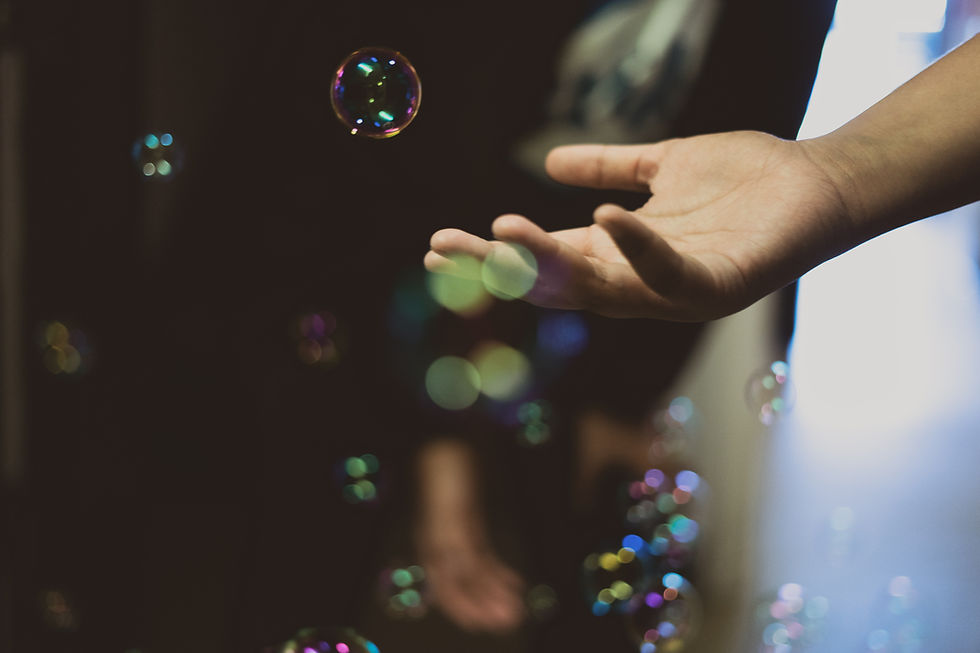What's the Big Deal with Sensory?
- Kelly Moritz
- Feb 13, 2021
- 3 min read

Sensory processing and trauma/adverse childhood experiences are one of my top interests to research and discuss!
Let’s break down the relationship between these two concepts.
Sensory processing is something we do from minute to minute of each and everyday without even noticing. Right now I am sitting in a coffee shop taking in the loud sounds of baristas making drinks, adapting to the colder temperature inside of the building and the harder surface of the seats, and attending to the feeling of hunger and need for a coffee to focus! It is the body’s way of taking in the world’s stimuli and turning it into responses.
Trauma is any adverse event (physical abuse, emotional abuse, sexual abuse, neglect, disaster, divorce, parental death, parental incarceration, medical trauma, refugee trauma, and terrorism) specifically early childhood trauma, occurs between the ages of 0-6.
Sensory development forms before attachment, emotion regulation and behavior regulation which means infants and toddler’s experiences are kept as sensory memories. They do not have the language to make sense of their experiences. (1).
Early traumatic experiences seriously impact the development of the sensory system, in addition to keeping the child in a fight, flight, freeze state. Trauma can present as sensory difficulties such as hypersensitivity to sound, touch or light or hypo-sensitivity to these stimuli.

There is a “Window of Tolerance” or “Optimal Arousal Zone” that each child and adult has within themselves. The window of tolerance is the ability that an individual has to regulate their emotions and remain alert, focused and available to learn, socialize and function.

A child that has a small window of tolerance, may become overloaded easily and react aggressively to events that may seem trivial to the outsider. A child may also hang out in the low activation zone and present as lethargic or slow to respond, “numb.”
Sensory based activities are a great way to organize the sympathetic nervous system and regulate arousal.
“Tactile, vestibular and proprioception are the foundations for emotional stability and touch is integral to attachment and relationship. Vestibular and proprioception are both grounding and connecting to the world around us” (2)
Proprioception involves pushing, pulling and jumping; activities that provide input to the muscle and joints. Here are some types of proprioceptive activities:
Wall pushes
Baking with a rolling pin/rolling dough
Crawling through a tunnel
Bouncing on a ball or trampoline
Animal jumps such as frog jumps or walking like a crab
Hopscotch
Carrying a heavy laundry basket
Chair push-ups
Vestibular is the sense of the body in space and is responsible for identifying head position, direction of movement and speed of movement. Here are some vestibular targeted activities:
Dancing and twirling
Swinging (if you do not have a swing, use a blanket)
Somersaults and cartwheels
Roller Skating and biking
Laying upside down on the couch or chair
Spinning in an office chair
Jumping rope
Playing Twister
.
Environmental and Routine adaptations to consider for children with trauma histories:
Dimming lights, especially fluorescent lights as these can flicker and be visually over-stimulating
Provide spaces that child can “escape” to such as a corner with a bean bag and some fidgets
Reduce bright colors and items on walls to prevent visual overstimulation
Provide a visual schedule to create consistency and structure
Allow child to trial items such as wiggle discs or sour /crunchy foods during tasks that require sustained focus and attention
If music is calming to child, provide music playlists for child to choose from and have on in the background during tasks
Provide child with deep pressure items or proprioceptive breaks (lap pads, yoga or carrying groceries)
Disclaimer: This is not an exhaustive list and may not work for every child. These are options and ideas to trial. Please reach out to an occupational therapist if you have specific questions. References
Images retrieved from http://www.traumacenter.org/announcements/TConf.09_SMART_Handouts.pdf
(1)Developmental trauma close up. (2017). Retrieved from https://beaconhouse.org.uk/developmental-trauma/developmental-trauma-close-up/ (2) Barthel, K. (2017). Trauma informed care and sensory modulation. ATTACh conference. Retrieved from https://www.attach.org/wp-content/uploads/2017/10/5C-Trauma-Informed-Care-and-Sensory-Modulation.compressed.pdf (3) Images retrieved from http://www.traumacenter.org/announcements/TConf.09_SMART_Handouts.pdf


Comments